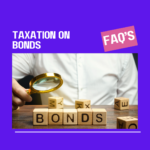Are buybacks taxed differently than regular stock sales?
Yes, buybacks are taxed differently from regular stock sales in India. Here’s how they compare:
| Aspect | Buyback of Shares | Regular Stock Sale (Market Transaction) |
|---|---|---|
| Who Pays Tax? | The company pays Buyback Tax @20% (if listed) | The investor pays Capital Gains Tax |
| Tax on Investor? | Listed Companies: No tax on investors (fully exempt) Unlisted Companies: Investor pays LTCG @20% (with indexation) or STCG as per slab | Listed Shares: - STCG (≤12 months): 15% - LTCG (>12 months): 10% (above ₹1 lakh) Unlisted Shares: - STCG (≤24 months): Slab Rate - LTCG (>24 months): 20% with indexation |
| How Gains Are Calculated? | Buyback Price – Purchase Price | Selling Price – Purchase Price |
| TDS Deduction? | No TDS on buyback amount | No TDS on market sales (unless NRI) |
Key Takeaways
✅ Buybacks from listed companies are tax-free for investors because the company pays the Buyback Tax @20%.
✅ Regular stock sales in the market attract capital gains tax (STCG/LTCG), depending on the holding period.
✅ Unlisted company buybacks are not tax-free—investors must pay capital gains tax.
What if I sell shares at a loss during a buyback?
If you sell shares back to the company at a loss in a buyback offer, the tax treatment depends on whether the company is listed or unlisted:
1️⃣ Listed Company Buyback (Tax-Free for Investors)
- Since buyback gains are not taxable (company pays 20% buyback tax), capital losses cannot be claimed for tax purposes.
- The loss cannot be adjusted against other capital gains.
- Effectively, the loss is a dead loss for tax purposes.
2️⃣ Unlisted Company Buyback (Taxable for Investors)
- Since capital gains tax applies, capital losses can be set off:
- Short-Term Capital Loss (STCL): Can be adjusted against any short-term or long-term capital gains.
- Long-Term Capital Loss (LTCL): Can be adjusted only against LTCG.
- If the loss is not fully utilized, it can be carried forward for 8 years and adjusted against future capital gains.
Do buybacks affect dividend income?
Yes, buybacks can impact dividend income, but indirectly. Here’s how:
1️⃣ Companies Use Buybacks as an Alternative to Dividends
- Instead of paying dividends (which are taxable for investors), companies may buy back shares to return cash to shareholders.
- Advantage for Investors:
✅ Dividends are taxed as per income slab (up to 30% for high earners), while listed company buybacks are tax-free for investors.
✅ Buybacks reduce share count, potentially increasing Earnings Per Share (EPS), leading to higher stock prices over time.
2️⃣ Impact on Future Dividend Payments
- A buyback reduces the number of outstanding shares, meaning fewer shares to distribute dividends.
- Companies that frequently buy back shares may pay lower future dividends or even stop paying them altogether.
- If a company uses most of its cash for buybacks, it may cut or reduce dividends.
Should an individual consult a tax advisor about buybacks?
✅ Yes, consulting a tax advisor can be beneficial, especially in these scenarios:
1️⃣ Understanding Tax Efficiency
- Listed Company Buybacks are tax-free for investors but impact long-term portfolio strategy.
- Unlisted Company Buybacks attract capital gains tax (LTCG @20% with indexation / STCG as per slab), which needs careful planning.
- An advisor can help decide whether to sell in the open market (where LTCG = 10% & STCG = 15%) or participate in the buyback.
2️⃣ Offset Losses & Tax Planning
- If you sell at a loss, an advisor can guide on offsetting losses against other gains to reduce tax liability.
- Timing of sale can affect total tax liability, especially if you hold multiple stocks.
3️⃣ Dividend vs. Buyback Strategy
- Some companies reduce dividends after a buyback.
- If you rely on dividends for income, an advisor can optimize your portfolio for tax-efficient returns.
4️⃣ Reporting Buyback Transactions in ITR
- While listed buybacks don’t need to be reported, unlisted buybacks must be declared under capital gains.
- An advisor ensures accurate reporting to avoid tax notices.
What tax documents should I maintain for proof of buyback transactions?
Keeping proper records is essential for accurate tax reporting and compliance. Here are the key documents you should maintain:
1️⃣ Buyback Transaction Proof
✅ Buyback Offer Letter – Document issued by the company detailing the buyback terms.
✅ Acceptance Letter & Confirmation – Proof that you accepted the buyback offer.
✅ Brokerage Statement – If the buyback was conducted through a broker.
✅ Contract Note – Issued by the broker/exchange, confirming the transaction.
2️⃣ Tax Reporting & Capital Gains Calculation
✅ Purchase Invoice / Contract Note – Original purchase price & date of shares for capital gains calculation.
✅ Buyback Payment Proof – Bank statement or broker ledger showing the credited amount.
✅ Capital Gains Statement – If applicable (for unlisted company buybacks).
3️⃣ Tax Compliance & Audit Purposes
✅ Form 26AS / Annual Tax Statement – To verify TDS deductions, if any.
✅ ITR Acknowledgment & Computation Sheet – In case of capital gains reporting for unlisted company buybacks.
✅ Any Correspondence with the Company / Broker – Emails, official notices, or confirmations.
Are there any tax-saving strategies for handling buyback proceeds?
If you're participating in a share buyback, here are some effective tax-saving strategies to maximize your returns:
1️⃣ Listed Company Buybacks (Tax-Free for Investors)
✅ No Capital Gains Tax – Since the company pays 20% Buyback Tax under Section 115QA, you receive the proceeds tax-free.
✅ Reinvest Wisely – Instead of keeping idle cash, consider reinvesting in tax-efficient assets like Equity Mutual Funds (LTCG up to ₹1L tax-free) or Tax-Free Bonds.
2️⃣ Unlisted Company Buybacks (Taxable for Investors)
Since capital gains tax applies, use these strategies:
✅ Claim Indexation Benefit – Opt for 20% LTCG with indexation to reduce taxable gains if holding period >24 months.
✅ Offset Losses Against Gains – If you book a loss, adjust it against other capital gains (STCL against STCG/LTCG; LTCL only against LTCG).
✅ Reinvest in Tax-Exempt Instruments – Utilize proceeds for PPF, ELSS, NPS (for deductions under Sec 80C) or Capital Gains Bonds (Sec 54EC) to defer tax.
3️⃣ Invest in Tax-Efficient Assets
✅ Tax-Free Bonds – Earn interest without additional tax burden.
✅ Debt Mutual Funds (New Tax Rules Considered) – Still offer better post-tax returns than FD if holding long-term.
✅ Capital Gains Bonds (Sec 54EC) – If applicable, reinvest up to ₹50L in NHAI/REC bonds to avoid LTCG tax.
4️⃣ Spread Proceeds Over Financial Years
- If possible, split sell orders across different financial years to stay within tax-exempt limits (e.g., ₹1L LTCG exemption for stocks).



